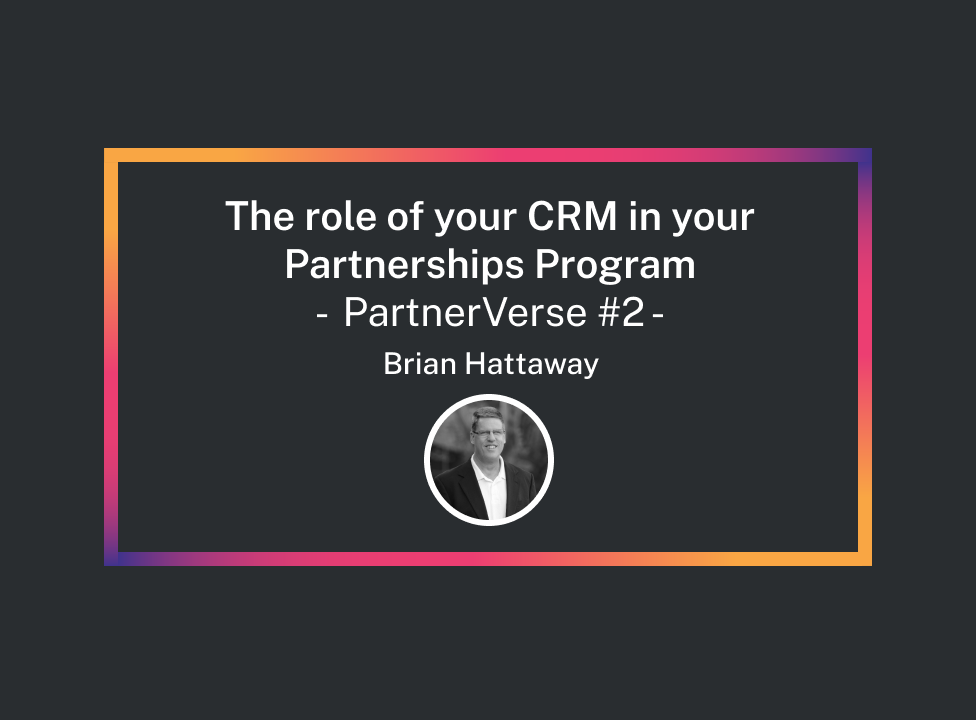Brian Hattaway is the Founder & Managing Partner for the ProCore Resource Group and also the Founder and Innovation Leader for IOLITE Solutions. He’s been providing consulting services on Salesforce integrations and solutions for more than 20 years, and he has a deep knowledge of the technical aspects of building and scaling a Partner Program. In this article, Brian explores the first principle to assembling the best Partner Tech Stack: Your CRM is the heart of your Partner Tech Stack.

Where should I build my Partner Program?
Our first guiding principle is the most basic and foundational one: Where should I build my partner program? There are many vendors who are creating solutions that seem to indicate that the partner program should be established in a 3rd party tool (i.e. a Partner Relationship Management tool or PRM). There are other platforms that serve as aggregator locations – where everyone is supposed to log in and congregate on a remote platform to swap leads and stories.
The key message in this blog is this: Keep your Partnership inside your CRM. Your CRM is the crown jewel of your relationship information – and it also houses all of your sales information. Any 3rd party tool will not have access to this data – and therefore any correlations you might make between partner activity and sales results can never be made.
We’ll talk more about exchanging data with 3rd party tools in later blog posts, however, the simple and most fundamental rule of partnering is to use your CRM as the center of the partnering universe. You can use 3rd party tools as long as they are connected to your CRM, work with your CRM, and can interface with your CRM. However, if the 3rd party does not allow for seamless integration, and operation in your CRM, you should stop using that tool immediately.
We hear war stories about partnering professionals trying to wrap their CRM around their PRM, or trying to meld an Account Mapping solution into current business processes. If you’re trying to bend your CRM around a 3rd party tool, or if you’re not able to see the 3rd party tool data in your CRM – stop using it. This is technical debt that you are creating for your partnering team.
They will have to ‘swivel chair’ between applications, or perform inefficient processes to get data to correlate. Your job is to create a partnering program that runs efficiently – don’t start out with tools that create technical debt before you’ve even had a chance to scale up.
This does not mean you should abandon 3rd party tools. Use them for what they are good at. Just make sure you can get the business critical data returned to your CRM for reporting purposes.
In summary – your CRM houses all of your Sales information as well as all of your Relationship information. You MUST have access to CRM data in conjunction with any 3rd party tool data in order to operate a successful Partnering program.
Our first guiding principle for a successful partnering reference architecture: Your CRM must be the heart of your Partnerverse.
Stay tuned as we explore each of the remaining principles on how to design the best Partner Tech Stack in the next blog posts in the Partnerverse series. Check out the initial article here.
Additional notes:
- You are welcome to connect with Brian on LinkedIn – mention Partnership Leaders in your connect invite
Join The 1850+ Leaders Transforming Partnerships
As a member of Partnership Leaders you will:
- Build and learn with the top partner people at the best companies around the world.
- Increase your impact and accelerate your career with proven resources, tools, and best practices.
- Grow a network of peers, partners, and advisors with common objectives.

